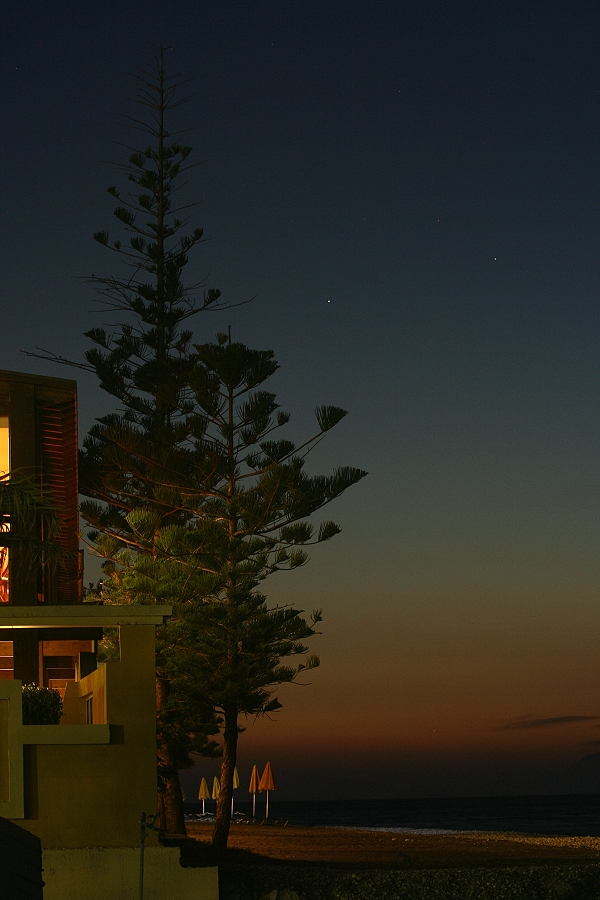

Aside from being the closest planet to the Sun, Mercury is only second to distant Pluto in being the smallest planet of
our solar system. It rotates completely around the Sun once every 88 days and has such a slow rotation about its axis
that a day on Mercury is greater in length than its year (ie. time required to orbit the Sun). The proximity of Mercury
to the Sun is responsible for its characteristic surface which is completely covered with craters, for the immense
gravitational force of the Sun attracts many comets and asteroids which inevitably also crash into Mercury due its close
proximity to the Sun. At aphelion, Mercury reaches a temperature of 285°C whereas during perihelion it surpasses 430°C
(7.5x the greatest temperature ever recorded on the surface of the Earth: 57.7°C, Lybia, Sept 1922). In contrast, the
temperature at night reaches -180°C due to the absence of any atmosphere. The only satellite mission to Mercury was
Mariner 10 which made three fly-bys between March 1974 and March 1975 when it photographed half its surface. One of the
most dominant features encountered by Mariner 10 is a plateau measuring 1300 km in diameter and is most probably due to
an impact from a 100-km wide asteroid travelling at 500,000 km per hour.
Greatest Eastern Elongation (2014): Mercury is perhaps the least-observed and most difficult
planet to see using the naked eye and this is something which predominantly has to do with the planet's incessant proximity
to the Sun, for this planet never strays by more than 18° to 28° from the Sun. However, there exist very brief windows
of opportunity during the fall and spring of each year when the planet is easily visible in the sky - around its greatest
eastern or western elongation - and thanks in part to earth's axial tilt, the nature of Mercury's orbit and the vertical
nature of the ecliptic during these months. For the result below, the greatest eastern elongation for 2014 will be on
May 25, 2014 (07:00 UT) with Mercury 22.8
degrees east of the sun. The bright star to the right of Mercury in the image below is beta Tau at mag 1.68.
Note: For additional results involving the Sun, Moon and other celestial bodies rising or setting
against well-known monuments and sites from around the world, please click
here.
|
Body: Mercury Mean Distance (A.U.): 0.387 Equatorial Diam (km): 4,878 Mass: 0.06 x Earth Volume: 0.06 x Earth Orbital Period: 87.969 days Number of Moons: 0 Orbital Eccentricity: 0.206 Orbital Inclination: 7.0° Albedo: 0.11 |
 |
Date: May 22, 2014 21:11:01 UT+3 Location: Ialyssos Beach Rhodes, Greece Equipment: Canon EOS 350D Canon EOS EF 70-200mm f/4 L @ 70 mm / f5.6 Exposure: 2.0 sec ISO 400 Manual Mode Software: Photoshop CS2 Processing: Resampling JPG Compression |